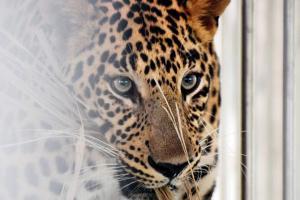After several delays, Forest Department to finally sign MoU with Wildlife Conservation Society - India to radio-collar three leopards, which will help experts understand man-animal cohabitation

The study aims to bring out some remarkable details about how leopards coexist with humans. Representation pic
The much-awaited study resulting from radio-collaring leopards in SGNP will finally see the light of day. By October-November, at least three leopards will be fitted with the collars. The study hopes to give an in-depth account of the lives of Mumbai's leopards and bring out details about how they coexist with humans. The project has been on the backburner for over a year. While there is no official reason behind the delay, it has now picked up speed as senior officials from the Forest Department want it to take off.
Confirming the development, additional principal chief conservator of forest Sunil Limaye said, "In the coming weeks, SGNP will sign a MoU with the Wildlife Conservation Society (WCS) India for putting radio collars on the leopards in SGNP. We are confident that the project will take off by October-November once all the permissions are in place." Internationally-acclaimed leopard expert and biologist Dr Vidya Athreya of WCS-India will head the project. Currently, the camera trapping study being done by Nikit Surve is helping authorities understand leopard movement and estimation in SGNP and adjoining areas.
ADVERTISEMENT
The main objective of the study will be to understand how leopards use the landscape in and around the park. Researchers studying leopards find the big cats hard to observe because of the animals' secretive nature. Camera trapping and collaring are two tools that allow them to obtain a greater understanding of leopards. "The collar study will go on for three years and help us in understanding the lives of these elusive but magnificent big cats. This is the first time leopards from this landscape will be collared. This will also aid us in studying their movement patterns," added Limaye.
Also read: Study on human-leopard interaction brings out interesting facts
How the collaring will help
The collars work by sending a signal to a satellite, which obtains the time and date. The satellite relays information to the researchers who can then investigate where the animal is and what it is doing.
Also read: Leopard sighting near Kasara rail tracks excites enthusiasts
Catch up on all the latest Crime, National, International and Hatke news here. Also download the new mid-day Android and iOS apps to get latest updates
 Subscribe today by clicking the link and stay updated with the latest news!" Click here!
Subscribe today by clicking the link and stay updated with the latest news!" Click here!







